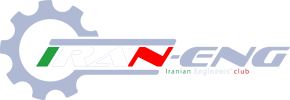Portable Dizzy 1.11.4 | 19 Mb
Dizzy is a chemical kinetics simulation software package written in the Java programming language. It provides a model definition environment and an implementation of the Gillespie, Gibson-Bruck, and Tau-Leap stochastic algorithms, as well as several ordinary differential equation (ODE) solvers. Dizzy is capable of importing and exporting the SBML model definition language, as well as graphically displaying models using the Cytoscape software system. The various simulation engines can be used to solve the dynamics of a kinetic model from specified initial data. A model consists of a system of interacting chemical species, and the reactions through which they interact. When a model is solved, the results can be plotted, displayed in tabular format, or saved to a file.
Portable 'Dizzy 1.11.4' does not require installation. Make as many copies as you need. Carry it in a flash drive and use on any computer, even without administrator access. No change of any setting on the host computer. No more conflicts with other applications. No more 'hijacking' of file types
http://rapidshare.com/files/240967521/Portable_Dizzy_1.11.4.7z
[h=2]
The Reactor Lab[/h]
The Reactor Lab
A fantastic program designed to help students gain a better understanding of reactor simulations...and best of all....it's free!
The Reactor Lab is a software program that provides simulations of a variety of chemical reactors. Students can actively learn about chemical reactions and reactors by performing experiments and analyzing data - quickly, safely, and inexpensively. The program can be downloaded free of charge and is available for most computers and in English, Spanish, and Portuguese. Those who have used the Lab range from high school chemistry students to chemical engineering university and graduate students, to professionals in industry. The Lab is not a general purpose simulator; if you have specific needs, contact us.
Over 16,000 people have downloaded the Lab from 103 countries in the last 6 years (through January 2006). We have heard from students and instructors using the Lab in courses in Bolivia, Brazil, Chile, Italy, Mexico, The Netherlands, South Africa, Spain, Taiwan, Turkey, and the U.S.
Little or no training is required for operation of the lab because of its consistent design. In addition, information about each object is displayed at the bottom of the window as the cursor passes over that object.
Data, which can have random error included, can be viewed with integrated table and plot functions and also saved to disk for analysis with standard software. Several lab modules have quizzes. Each student gets a different, randomly assigned set of kinetic parameters to find. Scoring is done by the program (with virtual $) and code-authenticated performance reports may be printed and saved to disk.
This is a parallel reaction system in a batch reactor.
The contents of the reactor are plotted continuously on the right side of the window (1 min of simulation time in 10 s real time). The user can change kinetic parameters, open and close valves, pause and resume the reaction and the simulation, and save data to disk files. A series reaction system is available in another lab module.
http://www.4shared.com/file/owI9QYzI/file.html




